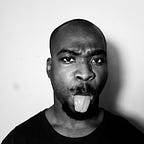Building your portfolio as a Software developer and designer in 2023
📌 Creating your first portfolio can be challenging for anyone new to design and programming. I decided to share my experience building my portfolio . It all started a long time ago… Just Kiddin, about five months at least
The First Portfolio
In the first month of 2022, I entered the year with my first portfolio as a developer and designer, which was exciting considering I had only started programming in September 2021 and still had a lot to figure out about my career with my newly acquired skill set. I asked my mentor, colleagues, senior colleagues and instructors for their feedback and on how to improve on it. As you well know, fellow designers and developers, feedback is not always satisfying to hear, but in this case, I swallowed my ego and accepted the constructive criticism and feedback. “It’s nice, but it’s not quite there yet,” my mentor said. “It’s okay, but I’m not feeling it,” said one of my work colleagues. “Tunde!” exclaimed my superiors. “What is this, and could you please redo it?” they inquired. “You need to do more, practise more, and this can get better,” said one of my instructors. After listening to what my coworkers, mentors, superiors, and instructors had to say about my portfolio and resume, I decided it was time to bootstrap and implement their recommendations in detail.
Going back to the drawing board
The following month I decided to redesign my portfolio, I didn’t like the idea at that time but I felt it was needed considering the jobs I had applied for were not coming through. So, I decided to look up articles about software portfolios and design portfolios. I found a portfolio article on Hashnode that was very helpful. This was a lot of information to process at first because I had to look up websites that belonged to developers and designers who had experience in the industry. After seeing all these wonderful projects the people had done, I got my spirit back to creating a new portfolio. At this point, I told myself that even though I’m still learning the ropes “I’m gonna create something amazing”.
Implementing Design Feedback (Figma)
Here I am in my room, with my laptop in front of me and a notepad by my side, contemplating how to implement the comments from the previous portfolio. At this stage, I was designing my portfolio using Figma, trying new things and looking at how to improve on what I had previously done. For instance, I had to adjust the opacity of the colour schemes I used for the text and background. As well as modify the thumbnails and images. Just so you know, there was a lot of debate about the colour, text and thumbnail components.
Implementing Code Feedback (React.js)
After designing and prototyping my website on Figma. I chose the React JavaScript library to write my code. During this period, I decided to use animations to make the portfolio less static. I used packages such as framer motion to create smooth transitions. In contrast to using HTML, CSS and Vanilla JavaScript. I was able to complete my project faster. Finally, I pushed it to GitHub and deployed it to Vercel. It took quite a lot to complete the coding aspect of my portfolio.
Thinking outside the box
Building my site required me to think outside the box. After reviewing several portfolios, I noticed that many of them had chosen colour codes for the website (primary colour, secondary colour, and accent colour), which I found to be quite restrictive. I decided to play with different colour shades and gradients on all of my images and thumbnails, some more visible than others, to “Make it Pop” as designers say, while strictly sticking to a white background.
Creating amazing things with amazing people
To create something amazing, I asked for advice from Amazing individuals. To begin, my mentor, Joseph Agunbiade, sat me down and showed me the possibilities of what I was capable of building. In addition, Celestine Omin gave me insights about creating resumes and portfolios during my Agile project management course. Furthermore, Kolawole Olagoke and Joseph Kalu offered professional and valuable design insights into my design process. Lastly, Abdulrahman Yusuf, Micheal Ezeoda and Desmond Nnebue took the time to review my code and gave me practical advice on how to improve my work.
Something for you
On Twitter and Behance, I’ll be posting a weekly summary of a couple of projects I’ve worked on. Kindly follow to get an update every time I post. Moreover, feel free to contact me if you have any job openings, internship opportunities or hackathons I can contribute to 😀.
📌 Follow me on Twitter & LinkedIn & Instagram & TikTok & GitHub for more content.
